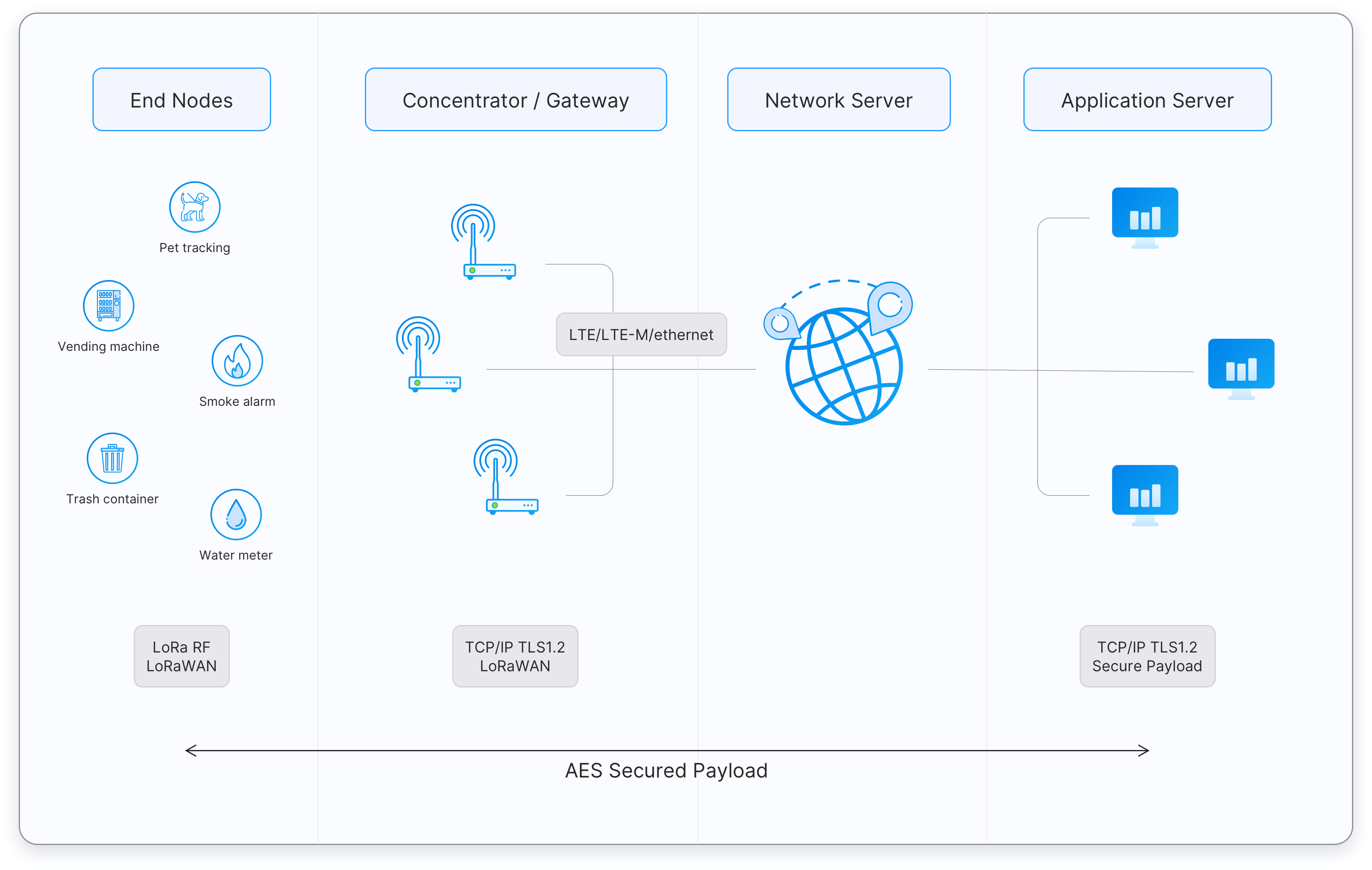The Things Network
Introduction
The Things Network (TTN) is a global IoT network that enables companies and individuals to connect their devices easily and securely using LoRaWAN® technology. It provides an open, reliable, and low-cost communication infrastructure for transmitting small amounts of data over long distances without the need for SIM cards, complex cellular plans, or high energy consumption.
Key Benefits
- Global coverage – The network is available in more than 150 countries and continuously expanding.
- Low power, long range – Devices can operate for years on a single battery and communicate over several kilometers.
- Secure communication – All messages are encrypted end-to-end to protect your data.
- Open and scalable – Built on open standards, enabling flexible integration with your existing cloud systems or applications.
What You Can Do with TTN
By connecting your devices to The Things Network, you gain access to an easy-to-use platform for managing your IoT data. You can visualize sensor readings, create alerts, and integrate the information into business dashboards or automation systems. TTN supports a wide range of use cases from smart agriculture and logistics to smart cities and energy management.
The Things Network helps you turn data into insights and insights into smarter decisions. With its global reach, secure architecture, and open ecosystem, TTN is the ideal foundation for any IoT solution that requires reliability, scalability, and simplicity.
LoRaWAN Network
LoRaWAN is a low-power, wide-area network (LPWAN) protocol built on top of the LoRa modulation. It is specifically designed for Internet of Things (IoT) applications. LoRa modulation is based on chirp spread spectrum (CSS), which enables long-range connectivity, resistance to interference, and operation with very low power consumption.
Devices and Gateways
End devices, such as sensors or actuators, are typically battery-powered and communicate using LoRa modulation. These devices transmit messages using an ALOHA-based protocol, meaning they send data whenever they need to, and any gateway within range can receive it. Gateways then act as packet forwarders, relaying received messages over IP (via Ethernet, Wi-Fi, or cellular) to the network server.
Network Server
The Network Server is the central intelligence of a LoRaWAN network. It:
- Authenticates and manages devices.
- Deduplicates messages when several gateways receive the same transmission.
- Determines the best gateway path for downlinks.
- Enforces end-to-end security using AES-128 encryption.
Application Layer
After processing, the Network Server forwards the messages to the Application Server. Here the data can be visualized on dashboards, integrated into cloud applications, or used to trigger automation workflows.
Topology and Use Cases
LoRaWAN follows a star-of-stars topology, where end devices connect to multiple gateways, and those gateways are connected to a central server. This architecture is ideal for applications that require long range, low power consumption, and small, infrequent messages. Typical use cases include smart agriculture, smart cities, asset tracking, utility metering, and industrial monitoring.
LoRaWAN Network Topology
